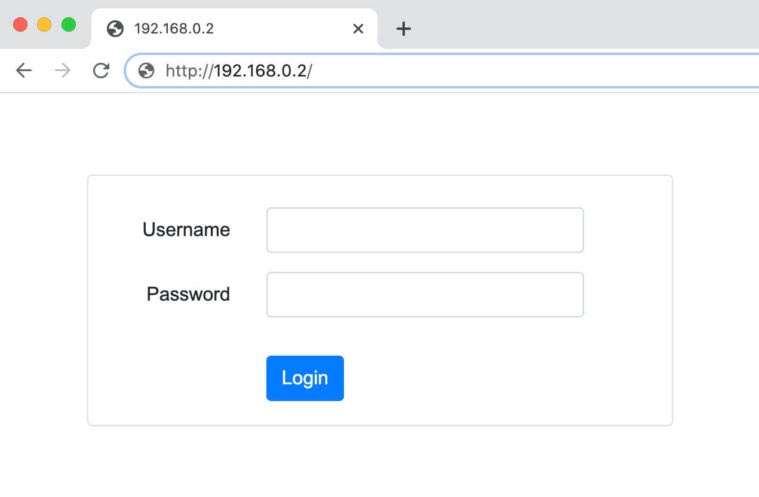192.168.0.2 is a private IP address that belongs to the Class C range of private addresses, commonly utilized by router manufacturers as a default gateway for accessing administrative controls. Notably, certain D-Link and NETGEAR router models ship with this preconfigured address, providing a standardized entry point to their management interfaces.
How to login to 192.168.0.2?
Connecting to your router’s administrative dashboard through 192.168.0.2 requires a few straightforward steps:
- Connect your device to the router either wirelessly or via Ethernet cable
- Launch any web browser (Chrome, Firefox, Edge, etc.)
- Type “http://192.168.0.2” in the address bar and press Enter

- When prompted, enter your login credentials
- After authentication, you’ll gain access to the configuration interface
Most routers have their default username and password printed on a label attached to the device itself. If you can’t locate this information, try common defaults such as “admin” for both username and password. Some manufacturers use “admin” as the username with a blank password field.
Network Configuration Capabilities
Once you’ve successfully accessed the admin interface, you’ll have control over various network settings:
Managing Wireless Network Settings
The interface typically provides options to:
- Configure your wireless network name (SSID)
- Set up or modify wireless security protocols (WPA2/WPA3)
- Create guest networks for visitors
- Implement MAC address filtering
- Adjust transmission power and channel settings
Modifying Network Security Parameters
Access to 192.168.0.2 allows you to enhance your network security by:
- Changing default credentials
- Updating firmware to patch vulnerabilities
- Configuring firewall settings
- Setting up DMZ and port forwarding rules
- Establishing parental controls and access restrictions
Understanding IP Addressing in Home Networks
192.168.0.2 exists within the private IP range specifically reserved for local networks. Unlike public IPs that route traffic across the internet, private addresses like 192.168.0.2 operate exclusively within your local network environment.
When your router assigns IP addresses to connected devices, it typically reserves the first few addresses in its range (like 192.168.0.1 for itself as the gateway). The 192.168.0.2 address might be either:
- Assigned to a secondary router in a cascaded setup
- Reserved as an alternative admin interface address
- Allocated dynamically to the first device connecting to the network
The Internet Assigned Numbers Authority (IANA) has designated several ranges for private use, including:
- 10.0.0.0 to 10.255.255.255 (Class A)
- 172.16.0.0 to 172.31.255.255 (Class B)
- 192.168.0.0 to 192.168.255.255 (Class C)
Your 192.168.0.2 address falls within the Class C private range, making it suitable for small to medium home networks.
Connection Troubleshooting
If you encounter difficulties accessing the admin interface through 192.168.0.2, consider these quick remedies:
- Verify your device has a proper connection to the router
- Ensure no typos in the address (common errors include using “l” instead of “1”)
- Check if your router actually uses 192.168.0.2 as its default gateway
- Try accessing via alternate common IPs like 192.168.1.1 or 192.168.0.1
- Reset your browser cache or try an alternate browser
Security Considerations
When accessing administrative interfaces through 192.168.0.2 or any IP address, prioritize these security practices:
- Change default login credentials immediately
- Use complex passwords combining uppercase letters, lowercase letters, numbers, and special characters
- Enable the highest available encryption standard for your wireless network
- Disable remote management unless absolutely necessary
- Regularly update router firmware to mitigate security vulnerabilities
By understanding how to properly access and configure your router through 192.168.0.2, you establish both a foundation for network reliability and crucial security protections for your digital environment.
